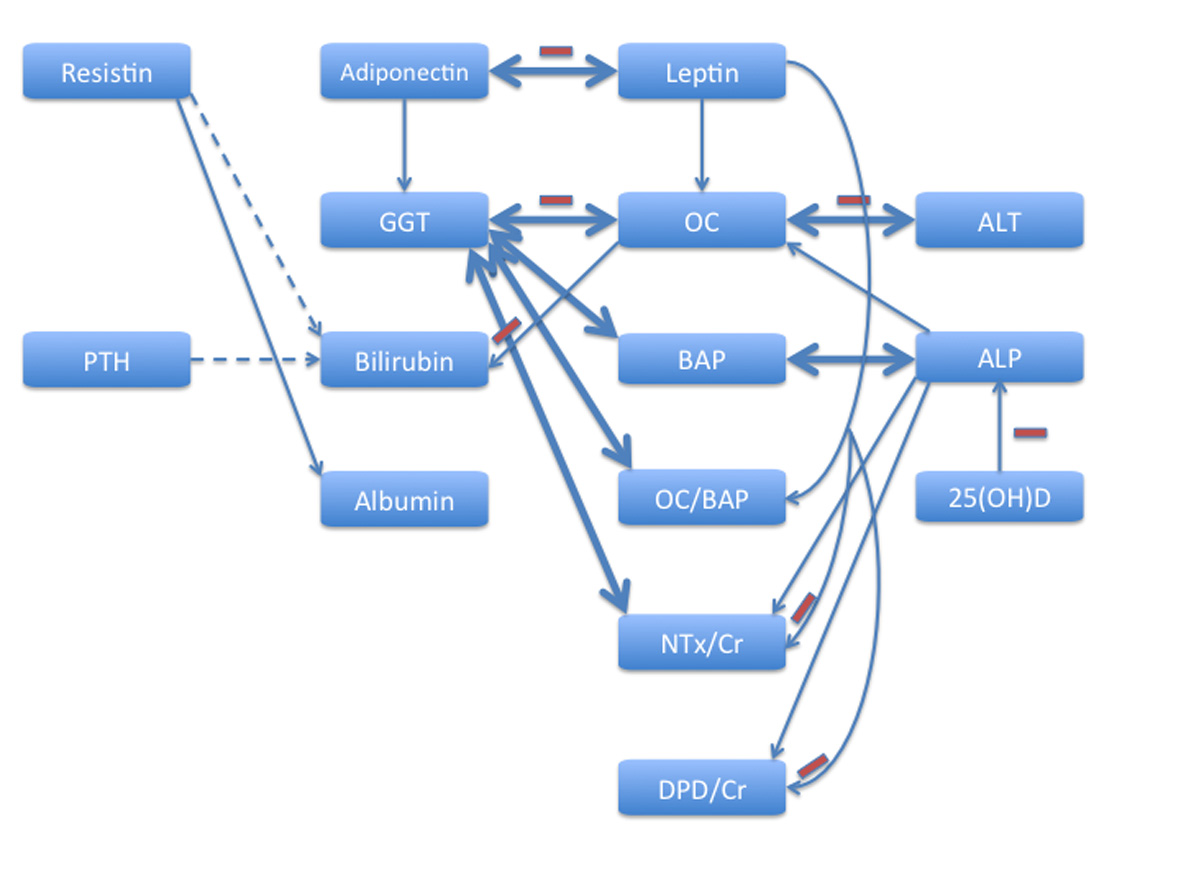
Figure 1. Links between liver markers, indices of bone metabolism and adipokines in older patients with hip fracture. GGT: gamma-glutamyltransferase; ALT: alanine aminotransferase; ALP: alkaline phosphatase; OC: osteocalcin; BAP: bone specific alkaline phosphatase; NTx/Cr: cross-linked N-telopeptide of type 1 collagen corrected for urinary creatinine concentration; DPD/Cr: deoxypyridinoline corrected for urinary creatinine concentration; PTH: parathyroid hormone; Hb: hemoglobin. Bidirectional links are shown in bold arrows; -- indicates inhibitory effect. The interactions between GGT and OC, BAP, and NTx/Cr, as well as between ALT and OC, and between ALP and BAP are bidirectional: the activity of hepatic enzymes contributes to synthesis and release of molecules reflecting bone formation and bone resorption, and these, in turn, influence the circulating levels of liver enzymes. ALP activity correlates with levels of serum OC and urinary resorption markers. There is a strong reciprocal association between adiponectin and leptin. Adiponectin is positively associated with GGT activity, while leptin is positively associated with OC and OC/BAP ratio and inversely with both resorption markers; therefore, adiponectin and leptin may exert opposite effects on bone metabolism; resistin is associated with serum albumin concentration. In multiple logistic regression analyses adjusted for age, sex and confounding laboratory (but not clinical) variables both resistin and PTH were independently associated with bilirubin levels (shown in dashed lines). All other data are based on fully adjusted model. Of note, in malnourished patients circulating adiponectin and OC levels are positively associated, while adiponectin does not correlate with GGT activity (not shown).